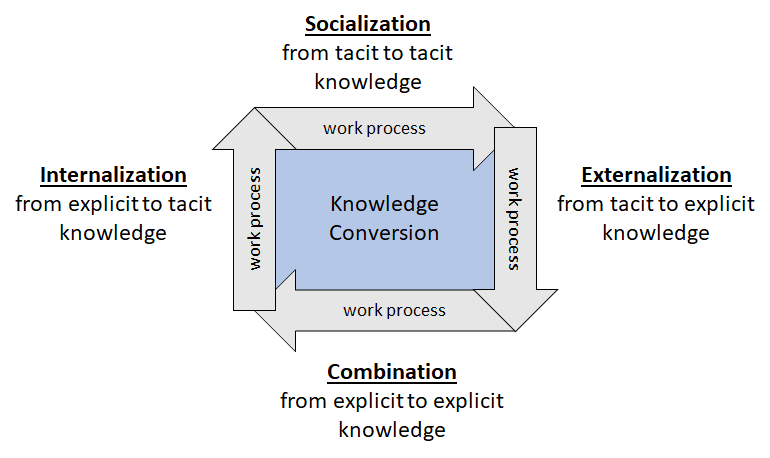
Knowledge Management
In literature there are many definitions for knowledge management and about introduction and set up in an organization. But there are certain aspects that can be identified in general:
- knowledge is created by people
- knowledge is essential for product development, innovation and quality of products
- when performing a task, people use knowledge and possibly in a multidisciplinary approach
- knowledge can be lost when people leave an organization (e.g. going to another organization or when they retire)
- knowledge is an important asset for an organization
- there are different kinds of knowledge
Collage of knowledge
When we talk about knowledge management or management of knowledge, which knowledge are we managing? In an organization people use knowledge and different knowledge and experience. So we need to get insight in the knowledge being used and get an overview of work processes and knowledge.This overview is called "Collage of knowledge" and the following approach will be used to create it and this can be used to manage knowledge in an organization. It can also be used to share knowledge about a certain topic, by making it available on the intranet of the company.
The approach consists of 3 steps and each step will be explained in more detail in a separate page. For now they will be explained in short and each step is in a different block with a different color.
Process Analysis
The purpose of this step is to get a good insight in the the work process. If needed the following can be done:
- create an overview of the company within its environment and the relevant stakeholders
- create an overview of the inside of the company to identify the main departments and their interaction, in relation to a service or product development or a manufacturing process
Knowledge Identification
When we have a good understanding of the work process, the next step is to identify the knowledge we have to focus on. The decision is normally made together with the company management.
Knowledge Conversion
In [1] The writers distinguish 2 types of knowledge: Tacit and Explicit knowledge. Knowledge is created through the interaction between tacit and explicit knowledge i.e. people work together in work processes. This leads to 4 different modes of knowledge conversion:

Based on the results of the previous steps "Process Analysis" and "Knowledge Identification" we can follow the work processes and the
knowledge conversions that take place in relation to the knowledge that has the focus.
Reference:
- The Knowledge-Creating Company - How Japanese Companies Create the Dynamics of Innovation
Ikujiro Nonaka & Hirotaka Takeuchi - Oxford University Press 1995 - The Tacit Dimension
Michael Polanyi - Doubleday & Company 1966
Examples of "Collage of knowledge"
After having done the 3 steps we now have an overview of knowledge conversions in the work processes and in relation to the knowledge that has the focus. Using the Collage as a metaphor we can consider all the knowledge that have been used as parts that together assemble into a Collage of Knowledge. The Collage of Knowledge can now be used:- for the knowledge management process i.e. which knowledge is essential and should be "managed" as a "resource"
- for sharing knowledge